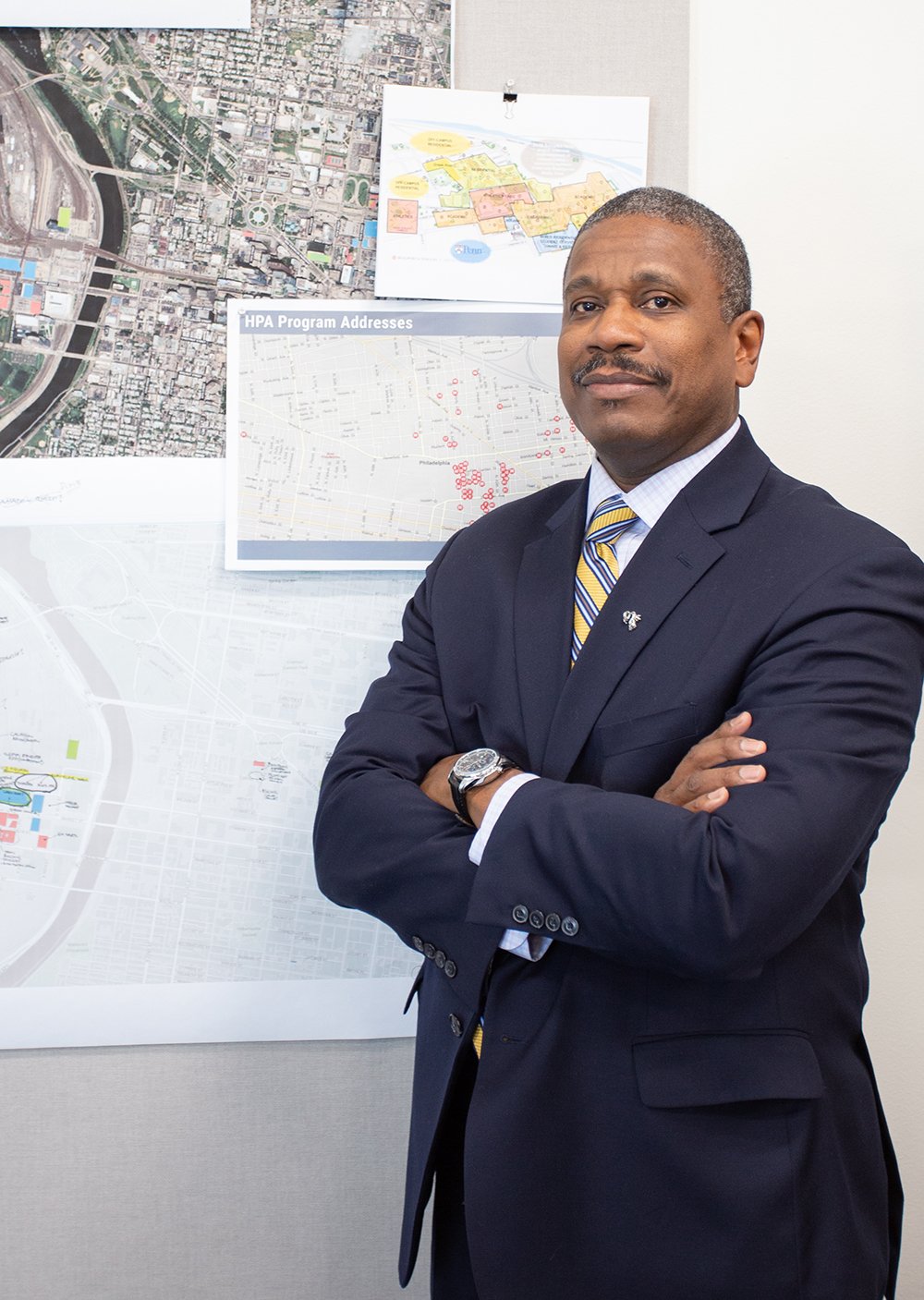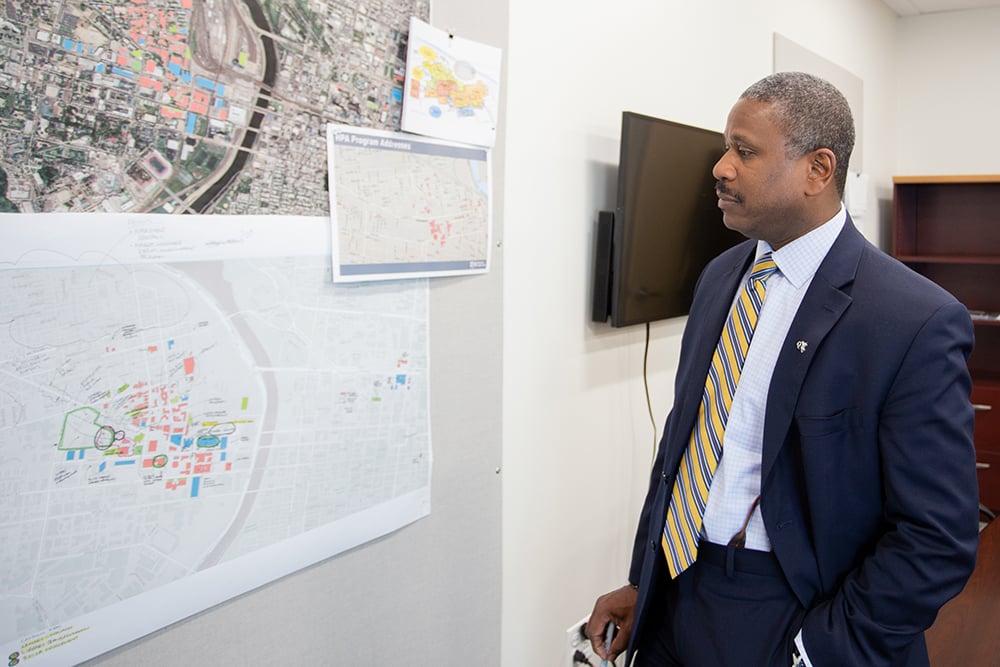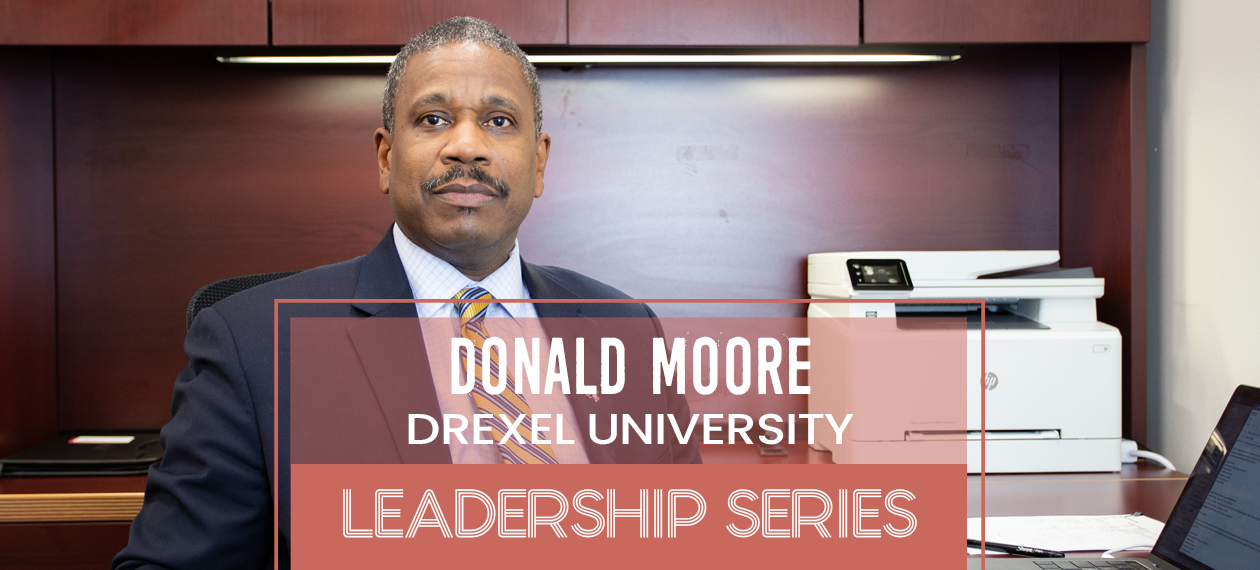In his former role at Rowan University, Donald Moore led the university through the largest and most sustained growth in its history (read: $700 million in capital projects). Now the Vice President of Real Estate & Facilities at Drexel University, Moore is harnessing the lessons learned from that intense period of expansion, combined with the many years and billions of dollars of institutional planning design and construction, to advance Drexel’s standing as a leading research institution.
Moore came to Drexel with more than 35 years experience in facilities and operations management, master planning, and real estate development in both the private and public sector. We enjoyed an engaging discussion with Moore on how the skill-set for facilities management has evolved, his refreshing perspective on town-gown relations, and why universities need to get better at “doing more with other people’s money”...
Did you always have your sights set on a career in real estate & facilities?
Growing up in Chicago, I enjoyed watching the high-rises go up and always had an interest in buildings. As an undergrad, I was a civil engineering and construction major. I briefly considered pursuing a career as an architect, but I instead wanted to find the best of both worlds where I could lead both design and construction. I ended up getting into large-scale development with Clark Construction Group, which definitely gave me the bug for building big, then after leading the development of public works projects in New York and New Jersey, I managed billions in school design and construction in New Jersey from 2001 to 2007.
I never targeted development on university campuses. It just so happened that a higher education institution in Southern New Jersey found me by way of reputation, appreciated my depth in master planning, design and construction oversight and invited me in. I took on an assignment at Stockton University, then Rowan University (again by way of reputation), and now I’m really enjoying being here at Drexel.
What was the most important lesson you learned from managing over $700 million in capital projects at Rowan?
There were a number of lessons learned, but first and foremost I learned how important it is to understand the rhythm of university leadership. If you’re going to lead facilities development, you must understand the mission and vision of the institution (Read more on how facilities can align with the academic mission here).
This understanding starts at the very top with the Board of Trustees and the University President, and they don't necessarily always see eye to eye. It’s critical to be aware of the nuances of that relationship and local politics in general. Also understanding the internal interests of your executive-level colleagues is critical towards gaining support as you pursue success for the institution on the whole.
At Drexel, I pay close attention so I can understand the big picture before I even begin to craft my own subset of a vision. What I’ve seen often is that in their zeal to develop many and large projects facilities leaders often want to drive their own personal agenda, doing this instead of understanding and respecting the greater institutional visioning. This can be a fatal performance flaw for facilities leaders who wish to operate within large-scale, responsible institutions; especially when they’re working hard to maintain institutional fiscal prudence.
 |
Do you have any strategies for working with leadership or stakeholders who might be considered difficult?
I believe each individual has a perspective, a worthy perspective. I feel that perspective should absolutely be respected as being valid from their point of view. It really requires patience on the part of facilities leaders to have a deep understanding of where everyone is coming from. This doesn’t mean you always have to agree, but rather that you give others the respect of exploring and sharing their thoughts.
If you choose not to do so, it will certainly cause discontent and possibly problems achieving a mission or vision down the road. You may also lose support as a leader from those inside the institution from whom you may seek assistance in the future. Getting along with people is important, but I think respecting people is the most important. So, my advice would be to respect that others have an opinion, and they are worthy of being heard, no matter what angle they’re coming from. Also, if you disagree, do so without being disagreeable.
What are you excited about at Drexel right now?
Drexel is focused on further enhancing our standing as a research and academic institution, so there are a couple of key projects which are moving in that direction. I’m very excited about that, and one of the reasons I came to this university is because of the research-intensive focus, and also Drexel’s standing in the Philadelphia community as a civically engaged institution that has something to offer beyond its borders.
Community redevelopment initiatives are truly an exciting piece for me. As I look to advance projects here at Drexel, I always consider how they may impact the community, which is another crucial nuance of success as a facilities leader. If you’re at a university where the community is treated like a subset of the institution, the ripple effects to the community aren’t truly considered. From my perspective, it should be the other way around: We are a subset of the established community that we exist within.
At Drexel, we exist in one of the poorest cities in the nation and have an obligation to advance initiatives that will have a positive impact on the community rather than detract from it.
That sounds like a great approach to strengthening town-gown relations.
Often, universities approach town-gown relationships from the perspective of: “How can we convince the community that what we’re doing is beneficial for the community? “Or, “How can we get the community to let us develop what we want to develop?”
Instead, facilities leaders should ask the community: “How can we help support who you are? How can we advance education or economic development in your community?” That's part of the mission here at Drexel; it's not a side benefit, it's a core competence of who we are as an institution. A precept that we were founded on.
Do you believe the skills that facilities leaders need to succeed have evolved since the beginning of your career?
Yes, the skills have evolved significantly. Today, facilities leaders need to have greater business acumen, which involves understanding contracts, contractual relations, and all the associated nuances. They need to be increasingly politically savvy and astute; not only to get done what they want to get done but also to consider if what they are pursuing is the right thing to do. Being a strong communicator and sensitive to human relations is essential, as is understanding and respecting the role of the dean, presidents, and all of the parties you’re dealing with and exist to support in some fashion.
There's a consistent voice out there among my professional colleagues, regularly complaining that facilities leaders don’t have enough money to advance their agenda. I feel it’s more important now than ever for facilities leadership to have a firm understanding of the financial implications for projects being advanced, and for them to be predictably and reliably accomplished within the cost parameters at hand. If you can better understand the overall financial position of an institution, you can craft your vision in a manner that can be more adept at being modulated so that it fits within the overall university mission, not just your own.

The conversation about limited budgets almost always circles back to deferred maintenance. Do you agree that this is a challenge?
One of the biggest challenges is always the deferred maintenance issue. However, some of the most well-endowed institutions have the same problems as some of the least-endowed institutions. I believe that's par for the course for an institution with a focus on education and research, you definitely walk in expecting tension to exist between operating budgets and capital budgets.
It's up to you to be savvy enough to do good for the institution when it sometimes cannot do as good for itself, which is no small feat, of course when finances may be constrained somewhat. It's critical for facilities leaders to understand that institutional focus is geared primarily towards advancing research and academics, not facilities development. In this regard, form must follow and support institutional focus, function, and mission. Again, the skill-set for facilities leaders has definitely advanced beyond someone who is just mechanically or building-minded.
Is staffing or developing future facilities leaders a challenge you’re facing?
I haven't solved that problem yet, but I think there’s an issue that starts with the way we educate future facilities leaders. The pipeline for younger talent tends to be divided. I believe it's quite unfortunate the way we prepare people academically because I haven’t seen higher ed institutions focus on a dual track of facilities management and construction management; it's usually either-or. That’s what I’ve seen in the output among my professional colleagues. There’s the design and construction side and then there’s the facilities and operations side. Often enough, both mistakenly assume that they are capable of performing in a leadership capacity on either side of that equation, without the needed training and mentorship.
Many of those I’ve met who are young in their careers hope to eventually make their way to the more attractive aspects of higher ed facilities existence, aka, design and construction. I was fortunate that I had that depth of experience prior to coming to higher ed and was able to parachute in with the responsibility of master planning, and also to build a bridge between the facilities/operations and the design/construction sides of each organization. Eliminating the operational “silos” that seem to ordinarily exist in higher ed. But my career track of having extensive institutional design and construction experience when entering higher ed is a bit unusual. So when you come across someone who happens to sit in the chair I sit in, they often are from an architecture, engineer, and occasionally budget and finance background, with little to no knowledge or respect for the construction implementation or real estate, and little interest or experience in the operations side of the house. They’ve often assumed an operations responsibility that they or others had no interest in.
What’s the best piece of advice you received in your career?
You cannot be fearful of making a decision. Far too often, people get stuck in analysis and are afraid to pull the trigger when the time comes to make a choice, but I don’t think facilities leaders can afford to be overly contemplative. Thorough in analysis, yes. But to become stuck in that analysis without achieving a clear position or result can at times be counterproductive and harmful. I’m a pretty strong decision-maker and that’s something that was cultivated in me by two very strong mentors that I've been fortunate enough to have had in my career.
Do you think physical campuses will continue to grow in the future?
I was discussing this with SCUP colleagues recently, and we came to the consensus that there will always need to be places for people to convene. Even with digital and distance learning and technology, people still need to gather together to share ideas and collaborate. So I think our business will continue to be called upon to deliver spaces that continue to evolve. What Drexel has achieved in partnership with researchers and health sciences developers is a perfect example of how spaces within University City now serve as collaborative and convening locations for many different disciplines of science and research.
There will always be a desire for a president to put their stamp on a university's growth, and often that’s by helping to further advance an institution or recreate it, both of which call for changes in the built environment. I believe that our positions are secure if we perform well within them and capture and embrace the mission and vision of the institutions that we are here to serve. In doing so we will have to find ways to do more with less money. In combination with doing more with less, we’ll also need to do more with other people's money, cultivating relationships with partners that share a similar vision and see a corporate benefit in our institutional success. The advent of the public-private-partnership model has truly expanded into higher education. At this point I see no reason why that model of advancing facilities development would slow down.

Posted by
Join us at HEFF!
An interactive retreat for facilities leaders at the nation's top colleges and universities.
Nov 8-10, 2026 | San Antonio, TX
Learn More









Comments